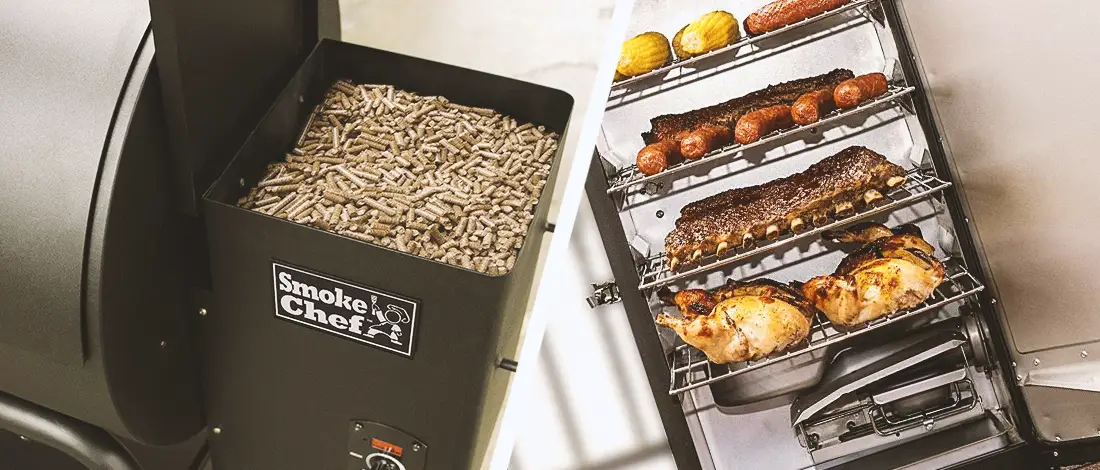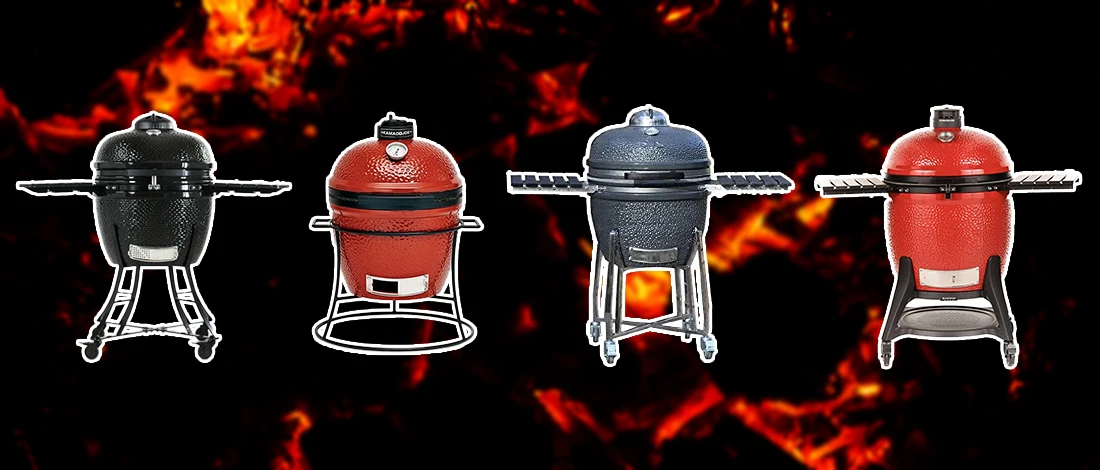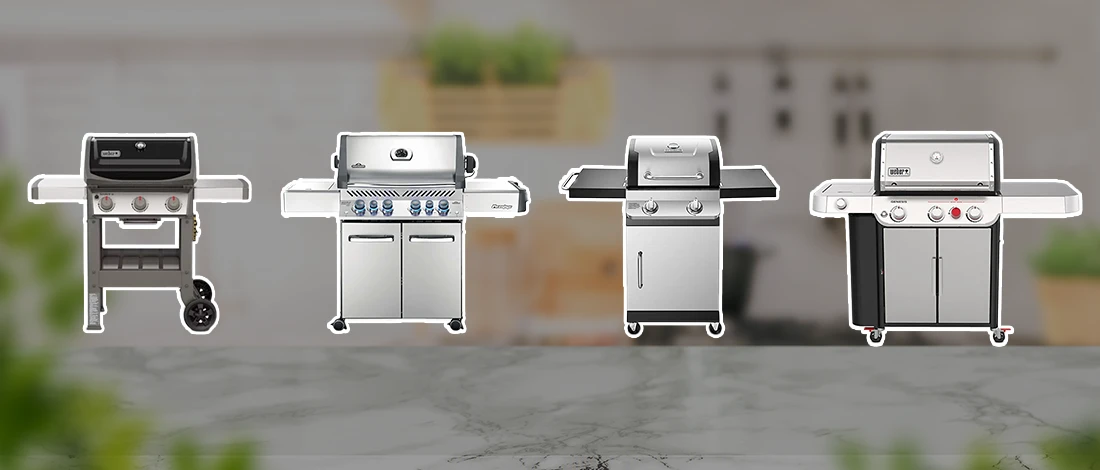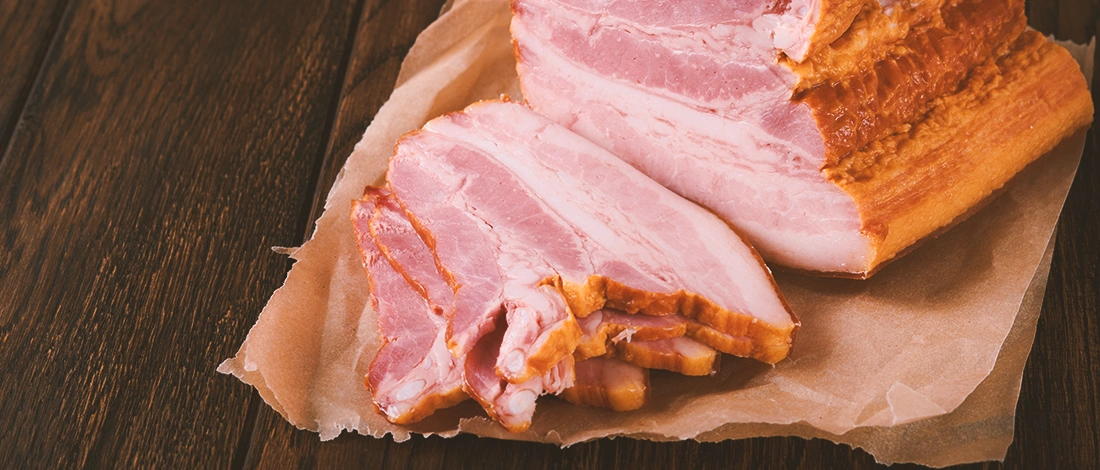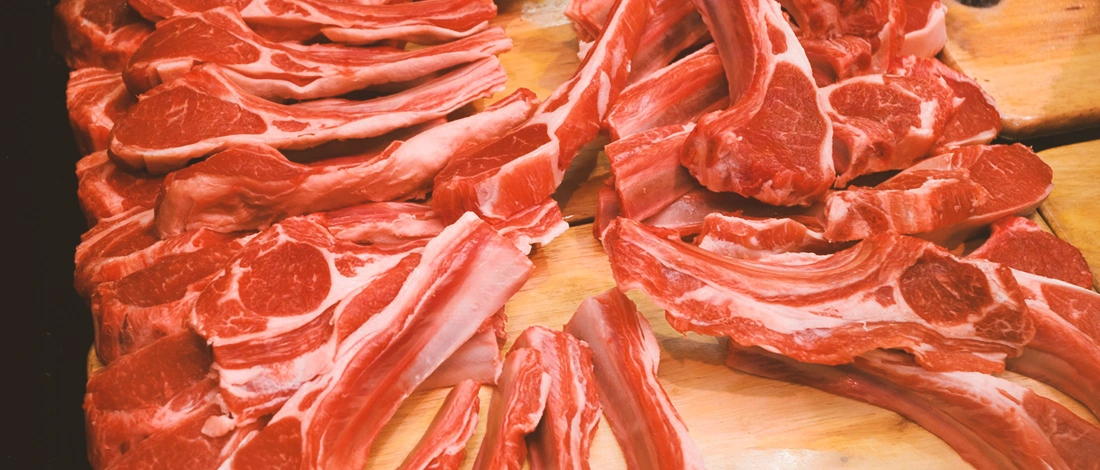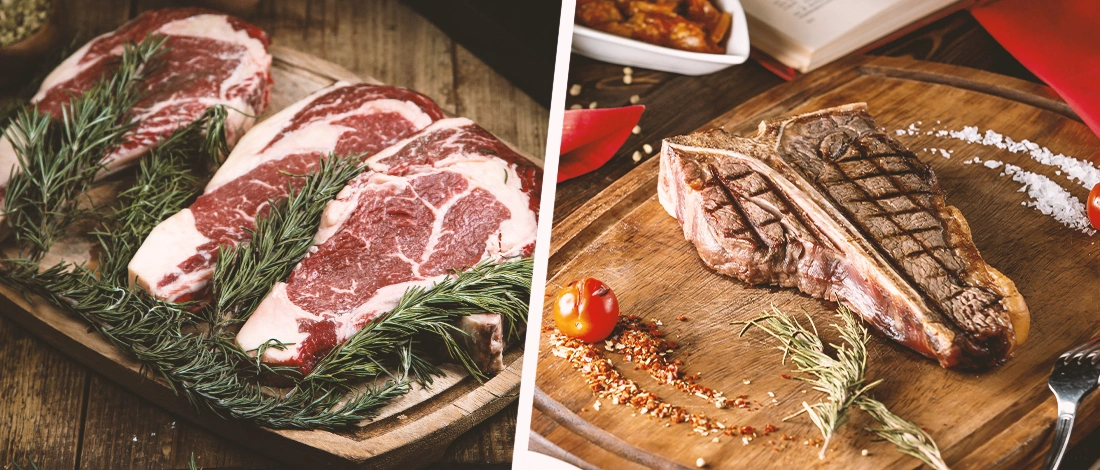When it comes to grilling, there are a lot of choices out there. But two of the most popular types are pellet grills and kamado grills.
So, what's the difference between these two grills?
I have been grilling for decades and have extensive time using both of these great methods.
This article will provide a quick rundown of the critical differences between kamado and pellet grills based on my years of experience.
Quick Summary
- Pellet and Kamado grills are both popular choices for outdoor cooking. They differ in temperature control, range, construction, fuel source, and maintenance.
- Pellet grills use wood pellets and electricity, offering easy temperature control and versatility.
- Kamado grills use lump charcoal, providing high-temperature ranges and unique ceramic construction.
13 Differences Between Pellet and Kamado Grills
Both kamado and pellet grills are great for cooking delicious food. But there are some key differences that you should know about these grill types before deciding which is suitable for you.
1. Fuel
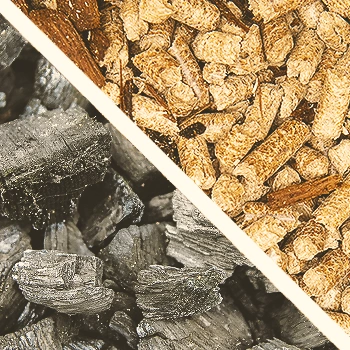
One main difference is that a pellet grill fuel is made from wood pellets, which are compressed sawdust made from hardwoods that have been treated with a binder and then formed into pellets [1]. The pellets are then fed into a hopper on the pellet grill.
When you turn on the pellet grill, the wood pellets are fed into the firebox, where they ignite and begin to smoke. This smoke is what gives pellet-grilled food its distinctive flavor.
The smoldering wood pellets also create a lot of heat, which cooks your food evenly and thoroughly at whatever temperature range you set.
These pellets can be made from 100% recycled wood, making them a sustainable and eco-friendly fuel source for the smoker.
On the other hand, Kamado grills ideally use lump charcoal as their fuel source. Some people try briquettes or charcoal pellets, but my personal favorite for a kamado is lump charcoal.
This fuel can give food a great smoky taste, but it can also be tricky to control the heat.
Although it can be messy and challenging to light, charcoal has a great taste and provides a high heat source perfect for searing meat.
2. Flavor
The type of fuel you use on your grill will also impact the taste of your food. Because of the wood smoke in the cooking chamber, pellet-grilled foods will have a rich smoky taste.
The type of wood pellets you use will provide different flavors for your barbecue or grilling.
For example, a personal preference for cherry or applewood fuel imparts a fruity flavor, while hickory or mesquite pellets give your food a more traditional wood-smoked taste.
Kamado grills can also produce a great smoky taste, but charcoal makes your food taste more like charcoal.
If you're looking for that traditional charcoal-smoke taste, then a kamado grill is a great choice.
Lump charcoal is made by burning wood in the absence of oxygen. This results in a more pure carbon product with a more robust taste than briquettes.
3. Temperature Control

One of the most significant advantages of how pellet grills work is their ability to easily maintain constant cooking temperatures.
This occurs because the fuel is fed into the firepot steadily, providing a continuous heat supply.
For your convenience, the grill's computer-controlled auger regulates the flow of pellets based on the temperature you set [2].
So, suppose you want to cook at low heat for slow smoking. No need to set timers to check your chicken or beef with a meat probe. The pellet grill will automatically feed pellets into the firepot at a slower rate to maintain that temperature.
Kamado grills can also be temperature controlled, but it requires significantly more attention and effort. After the charcoal is lit, you need to allow the grill to preheat for about 15 minutes.
After the grill has preheated, you will need to open the vents. The amount of airflow you let in will determine how hot your fire burns.
If you want to increase the temperature, you will need to open the vents more. If you're going to decrease the heat, you will need to close the vents.
You'll also need to carefully monitor the amount of charcoal you're using and see if you need to add more.
Some people find cooking options like a heat deflector are crucial to keeping stable temperatures during the cooking process and ensuring maximum grilling performance.
4. Size and Cooking Area
Pellet grills tend to be larger than kamado grills, making them better suited for cooking large quantities of food.
They may be challenging to store because of their size, but the square inches of cooking space they offer make pellet grills worth the investment if you do a lot of grilling for family and friends.
Some models come with a warming rack or side burner, which gives you quite a bit more versatility and cooking options.
Kamado grills are more compact and easier to store, but they don't offer as large a cooking surface as pellet grills.
This makes them better suited for smaller gatherings or individual meals. They do not have sufficient space for a warming rack.
5. Cost
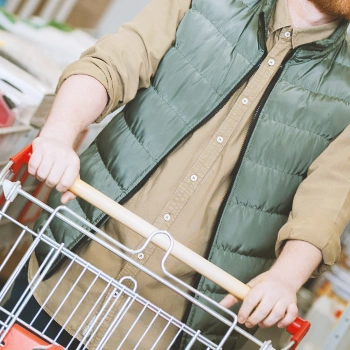
Pellet grills tend to be some of the more expensive grilling options to buy and operate.
The pellet grill requires significant mechanics and technology to move the wood pellets, which drives up the cost.
In addition, you will need to purchase fuel to cook food, which can add to the overall cost of operating a pellet grill.
Kamado grills are less expensive than pellet grills because they are low-tech and use a more traditional fuel source. Lump charcoal is widely available and relatively inexpensive.
You may need to purchase a few accessories to get the most out of these charcoal grills, such as a charcoal starter, but the overall cost will be lower than that of pellet grills.
Read More: Best Pellet Grill Under $500
6. Ease of Use
Pellet grills offer great ease of use once you understand how they work. The key is to consistently keep the fuel flowing into the firepot to maintain the desired temperature.
Most pellet grills have a computer-controlled auger that regulates the flow of pellets based on the temperature you set on the control panel.
So, all you need to do is set the temperature and let the smoker do its job. How much fuel you need depends on how hot you will run the grill.
Being a charcoal grill, the kamado is a bit more challenging to use. This is because there is no control panel and you have to carefully control the amount of air that flows into the grill.
If you open the vents too much, the fire will burn too hot. If you close the vents too much, the fire will go out.
So, you need to find the perfect balance to maintain the temperature you want. You also may have to add more charcoal.
Unlike a gas grill, this takes some work and attention. But it's not too difficult once you have some practice.
7. Heat Retention
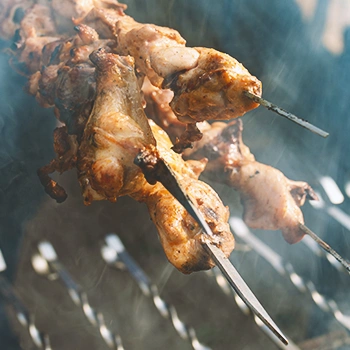
Pellet grills use indirect heat for cooking food, so they are very good at maintaining a consistent temperature. This makes this grill ideal for slow cooking and smoking.
They are generally built from stainless or powder-coated steel, which is not particularly good at retaining heat. This means that a pellet smoker can lose heat quickly once the fire goes out or if the external temperature drops.
Kamado grills are made from ceramic, an excellent material for retaining heat. This means that this charcoal grill can maintain a consistent heat with less effort than pellet grills.
However, this same heat retention makes this grill a poor choice for cold smoking or similar cooking options.
8. Remote Control
Some pellet grill versions have a wifi-enabled temperature controller so that you can monitor and adjust the temperature from your phone or tablet.
This is an excellent feature if you're cooking for a large group of people and want to be able to walk away from the pellet grill - knowing it will add more fuel as needed.
A kamado grill does not have this feature, so you will need to be close by to monitor and adjust the temperature.
At this time, no kamado grill has an automated temperature control system, and each grill is adjusted manually. Thus, there is no way to remotely change the kamado grill's temperature.
9. Varieties
Pellet grills come in a variety of different types. Many units have an offset firebox into which you load the fuel.
Other grills come with a front-loading pellet hopper on some models. Another option is the vertical or cabinet-style pellet grill. These have doors on the front of the grill unit and shelves inside.
Traeger grills and Z Grills are two of the biggest names in the pellet market.
"Centuries ago, these knee-high cookers – known as kamados – were fueled by wood or natural charcoal, and pots were hung inside them for cooking rice. Popularity spread as U.S. service members discovered kamado cookers during World War II and shipped them home after the war."
- Big Green Egg Official Website, A Leading Kamado Grill Brand
On the other hand, a kamado grill really only comes with one option. These ceramic grills all have a similar egg-shaped appearance.
They are placed on a cart with wheels or a stand with legs. Some grill models have shelves built-in to the unit, while others come with a side table that can be attached.
Kamado Joe and Big Green Egg are well-known makers of these grills.
10. Portability
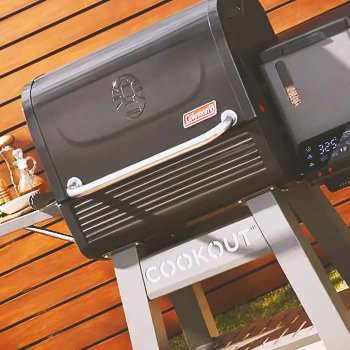
A pellet grill is often not very portable because of its size and weight. They also are somewhat difficult to move because they require electricity to run.
This makes it hard to bring the grill on camping trips or anywhere else without a power source if you want to use your pellet grill away from home.
You also need to take care when moving the pellet grill, so you do not damage any of its machinery.
A kamado grill is somewhat more portable than a pellet grill. They are often heavy because of their ceramic composition, but they do not require electricity to operate.
Thus, you can use this grill anywhere, even if there is no power source nearby. Be careful when transporting a kamado grill because the lid or body can break if dropped or mishandled.
11. Maximum Temperature
A pellet grill uses a small auger to continuously move pellets into the fire, resulting in a more consistent and efficient burn.
Most pellet grills max out at 500 degrees Fahrenheit. Some grill models can reach temperatures as high as 600 or 700 degrees, but this is rare.
A kamado can achieve very high temperatures, ideal for searing meat. The ceramic walls of the grill retain heat very well, so the temperature inside can reach 750 degrees Fahrenheit.
This high heat is perfect for creating a crisp, caramelized crust when grilling steak or burgers. It also allows you to cook food quickly, without drying it out.
12. Durability
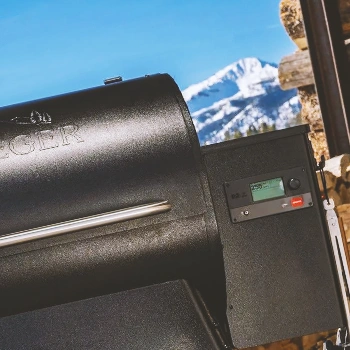
A pellet grill is designed to be very durable with its stainless steel or powder-coated steel casing. That said, these grills do have several electrical and mechanical parts that are at risk of breaking down.
For example, the augur that feeds pellets into the fire can become jammed, causing the motor to burn out. That said, with proper care and maintenance, a pellet grill should last for many years.
Kamado grills are made from ceramic, a very tough and durable material. The only real risk of damage to a kamado grill is if it is dropped or otherwise mishandled.
The kamado grill has no moving parts, so there is nothing that can break down or malfunction during use. This means that you can expect this grill to last for a long time.
13. Cleaning
Pellet grill owners find that it requires regular cleaning to prevent the pellets from clogging up the auger and causing it to malfunction.
It is also essential to clean the pellet grill grate to prevent food from sticking and making it unhygienic. You should empty the firebox of ash after each use of your grill.
A kamado ceramic grill is very easy to clean because of its smooth ceramic surface. You can easily scrub the grates clean from grease and empty the firebox of ash.
The only other cleaning that needs to be done is to wipe down the grill's exterior and lid to remove any dirt or debris.
The Pros of Kamado and Pellet Grills

Both a pellet grill and kamado grill have many features that make them popular with serious grillmasters. Here are some of the most significant benefits:
Pellet Grill Pros:
- Excellent temperature control
- Easy to use grill
- Good at smoking and slow cooking
- Variety of models to suit your needs
- Large cooking area
Kamado Grill Pros:
- Great for searing meat
- Superior heat retention
- Easy to clean grill
- Very durable
- Compact size
The Cons of Kamado and Pellet Grills
Of course, no grill is perfect, and there are some downsides to kamado and pellet grills. Here are some of the potential negative aspects of these grills:
Pellet Grill Cons:
- Can be expensive
- Not very portable
- Requires electricity to operate
Kamado Grill Cons:
- Heavier than other grills
- Not as many grill models to choose from
- Manual temperature control using airflow
Related Articles:
References:
- https://www.woodpellets.com/heating-fuels/pellet-processing.aspx
- https://learnmetrics.com/how-does-a-pellet-stove-work/


